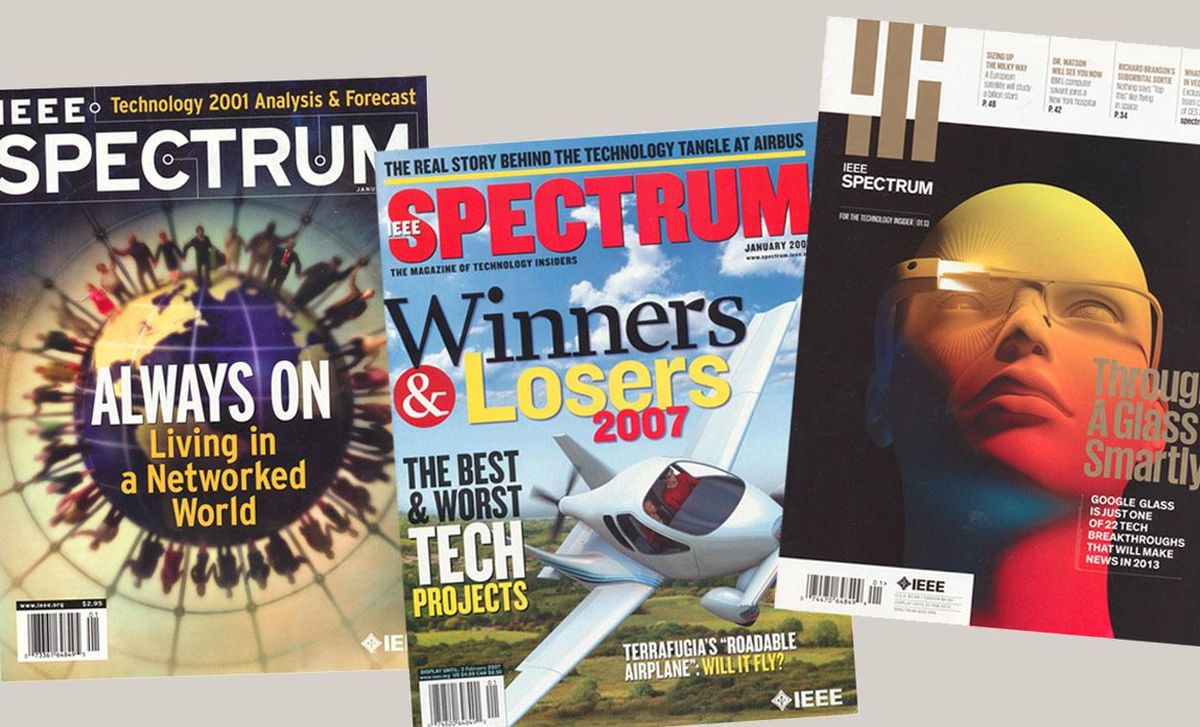Magazines love to dabble in prognostication, particularly when it comes to emerging technology. Startups show such futuristic pronouncements to potential investors, who in turn use them as data points to inform their bets. And as readers, we gravitate toward them, if only so we can feel superior when, say, a highly anticipated product launch bombs—chef’s kiss to Mark Zuckerberg for the schadenfreude fest that is the metaverse.
Think of IEEE Spectrum’s annual technology forecast as prognostication filtered through a skeptical lens and years of ongoing coverage of technological advances from lab to market. Each January, we look at projects across the globe and from a range of engineering disciplines that will have major milestones in the coming year. While some technologies flop and fade away, others produce multiple hype cycles that raise and then dash hopes again and again. Take flying cars. Back in 2007, we predicted that the flying-car startup Terrafugia would fail. The company lurched along for years until finally ceasing U.S. operations in 2021, ironically just after receiving a Special Light-Sport Aircraft airworthiness certificate from the U.S. Federal Aviation Administration.
But as we wrote in 2014, flying cars are an idea that will not die. And even though the road—or the flight path—to commercial success is riddled with regulatory and social obstacles, eVTOLs (a newer and less sullied, acronym-a-licious moniker for flying cars) have attracted billions of dollars in investment in recent years. And now, the sector seems poised to finally take off, as Editorial Director of Content Development Glenn Zorpette reports in his story about Opener’s BlackFly eVTOL.
Flying cars illustrate one path that emerging technologies follow, with innovators and investors taking chances and failing early on. True believers learn from those failures, ultimately leading to solutions that are then brought to market.
Sometimes, though, externalities like a changing climate fast-track technologies that have been languishing in development for decades. Back in 2001, Senior Editor Michael J. Riezenman wrote about hydrogen fuel cells as a promising answer to long-haul transportation needs. Back then, the hydrogen economy seemed right around the corner. Fast-forward 22 years and Contributing Editor Peter Fairley reports on two Australian companies that aim to use hydrogen to make a big dent in the country’s greenhouse-gas emissions. One company is using renewable energy to produce hydrogen as fuel for huge trucks to haul zinc ore. The other is developing a new generation of electrolyzers to produce hydrogen for export, although exactly how that will work has yet to be determined. Thank the pressures of the climate crisis for this green-hydrogen boom.
Cryptocurrencies, which we’ve been covering since they emerged, have imploded over the last several months. This crypto winter has soured many people on that particular application of blockchain technology, but there are many other, perhaps more promising ways to apply a blockchain. One is as a means of providing proof of personhood, as the journalist Edd Gent explores in his critical look at Worldcoin. The company’s founders want Worldcoin to be not only a global currency that will somehow redistribute wealth via universal basic income but also a secure means of biometric identification, with a dose of buzzy, Web3 facilitation thrown in for good measure. And so, while crypto is tanking and the NFT market has fizzled, something useful may yet rise from the ashes of Web3. I’ll go out on a limb here and predict that Web3 will be recalled in years to come as a figment of some collective pandemic fever dream.
Check back in a few years to see how that prognostication pans out. Meanwhile, have some fun with this issue. And for IEEE members, enjoy your exclusive member benefit: online access to our feature archives going back to 2000. Log in to the Spectrum website to trace how technologies like lidar and microLEDs have developed into components that now enable other technologies—a new generation of blimps and optical interconnects for chiplets, respectively—which are also featured in this issue.



